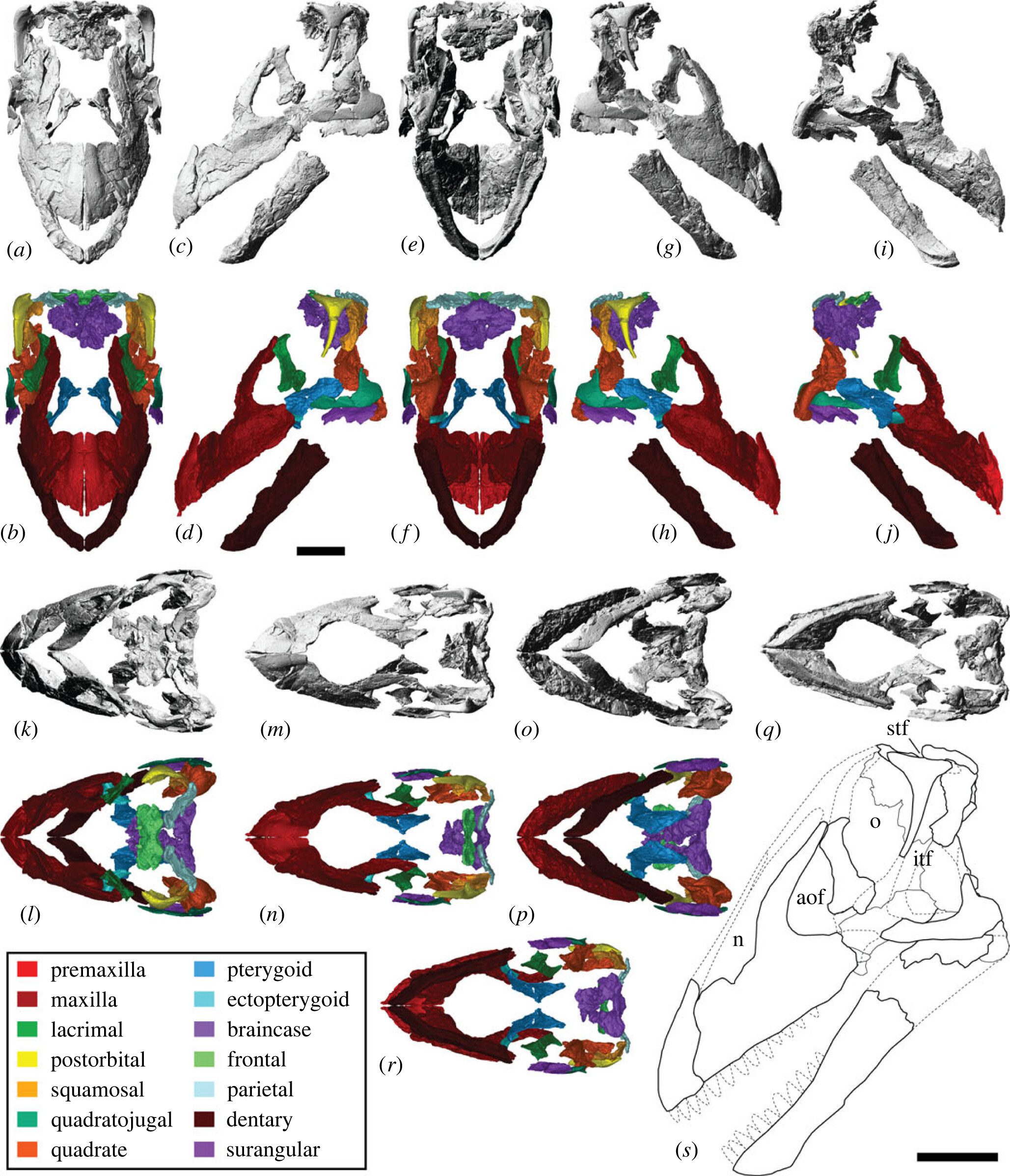Titanosaurian sauropod dinosaurs, including Patagotitan, roamed around during the Cretaceous period in pretty much every corner of the world. Despite their global distribution and abundance, only a few species have been well preserved with more than one specimen found in the fossil record, and even fewer have been found with skull fragments. One species, Diamantinasaurus matildae, was known from three separate specimens, and now a fourth has been discovered in Australia that includes a near-complete skull with some interesting, previously unknown, features.
The new specimen of D. matildae, which has been nicknamed Ann, shows some surprising similarities to another dinosaur species, Sarmientosaurus musacchioi, from Argentina. These include very small cone-shaped, chisel-like teeth, which are actually replacement teeth similar to how humans and other species replace their teeth as they age. They also found similarities in the structure of the bones in the skull and back of the head.
“This skull gives us a rare glimpse into the anatomy of this enormous sauropod that lived in northeast Australia almost 100 million years ago,” said Dr Stephen Poropat, lead researcher and palaeontologist from Curtin’s School of Earth and Planetary Sciences, in a statement.
“Our research suggests that Diamantinasaurus was one of the most ‘primitive’ titanosaurs. Gaining a better understanding of this species might explain why titanosaurs were so successful, across so much of the world, right until the end of the Age of Dinosaurs.”

Reconstructions of the dinosaur skull. Image Credit: Propat, S et al. (2023)
The team performed a CT scan on the skull fragments of the specimen. The total skull is around 50 centimeters (19.6 inches) long and shows most of the left side of the head though the right side is mainly missing. The bones were found in 2018 on Elderslie Station, near Winton in Queensland, Australia.
It’s rare to find the skull of a sauropod. Despite being made up of six individuals, the Patagotitan currently on display at the Natural History Museum London had to have a replica head based on similar species as no real head of a Patagotitan has ever been found.
The researchers believe that these bones lend support to the theory that there was a land bridge between what is now Australia and South America linking the continents via Antarctica.
“We suggest that sauropods were travelling between Australia and South America, via Antarctica, during the mid-Cretaceous. Warmer conditions that far south might have been favourable for them,” Dr Poropat said.
The remarkable similarities between the skull morphology of Diamantinasaurus matildae and Sarmientosaurus musacchioi lend strength to the theory that the two species were closely related. Both dinosaurs were known to exist in the same time period around 95 million years ago and it is feasible that they roamed around the Southern Hemisphere together.
The paper is published in the Royal Society Open Science.
Source Link: 95-Million-Year-Old “Near-Complete” Dinosaur Skull Is First Of Its Kind In Australia